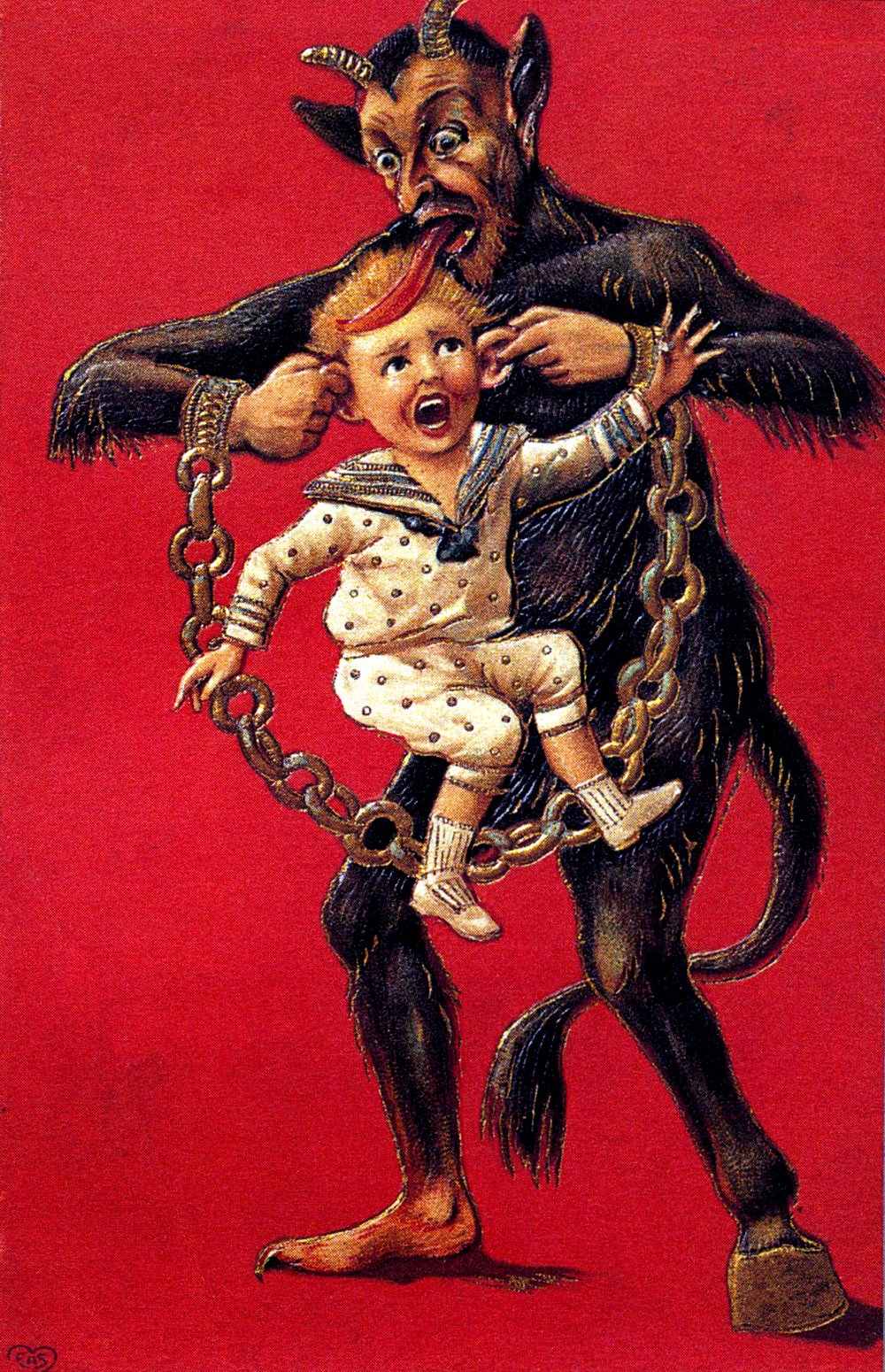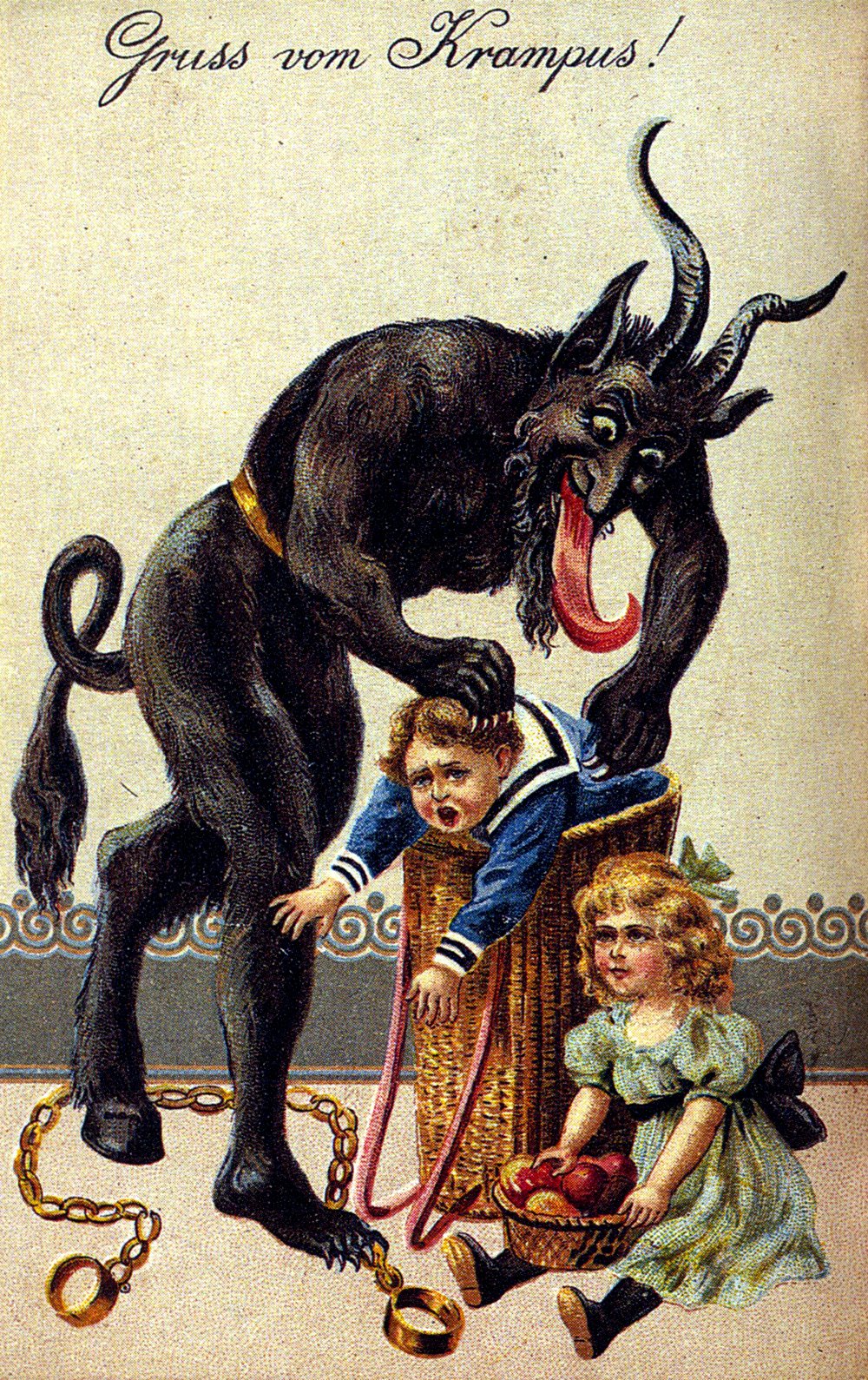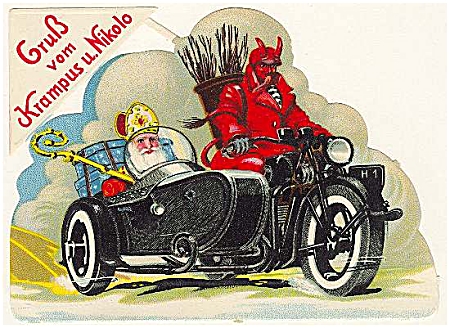A Note To Parents: APS doesn’t condone using Krampus as a method of keeping your child’s behavior in check, but if the “Elf On the Shelf” isn’t cutting it, there’s other options.
 You better watch out, you better not cry, you better not pout….not because Santa Claus will put you on the naughty list, but because you’ll get a swat from a scary incubus with claws, known as Krampus, and possibly dragged into hell in a basket. Depending on where you live, the holidays may not be all about holiday cheer and positivity, but instead, a rather terrifying one if you weren’t a good boy or girl this year!
You better watch out, you better not cry, you better not pout….not because Santa Claus will put you on the naughty list, but because you’ll get a swat from a scary incubus with claws, known as Krampus, and possibly dragged into hell in a basket. Depending on where you live, the holidays may not be all about holiday cheer and positivity, but instead, a rather terrifying one if you weren’t a good boy or girl this year!
If you’re from Germany or Bavaria, or any Alpine region, the legend of Krampus may be a familiar one. In fact, December 6th marks a day known as Krampusnacht (Night of Krampus), also regarded as the “night before St. Nicholas”. To celebrate, people will have parties featuring men dressed as the holiday devil himself. Costumes include sheepskin, claws, horns, and switches so that they can swat unsuspecting children and maybe a few ladies. 😉 Other costumes will also include witches, devils, wild-men, and other scary get-ups while bearing torches and copious amounts of alcohol and an event called Krampuslauf (Krampus Run). In fact, these men are encouraged to terrorize the children. Interestingly enough, the Pennsylvania Dutch culture has a figure very similar to Krampus called, Pelsnickel or Belznickel. So some traditions stayed after the migration from Germany to North America.
Krampus means, “claw”, and he is the darker counterpart of Saint Nicholas. While Santa Claus will reward nice children, Krampus will swat naughty children, terrify them with his cloven hooves and monstrous tongue that would make Gene Simmons blush, and tying them to baskets with chains and taken down to hell. If that’s not motivation to behave, I don’t know what is!
The belief and lore of Krampus is actually older than Jesus. Krampus was born from an Alpine Pagan tradition during winter solstice that dates back to pre-Christian times. In fact, the origin of Krampus has a performance element to it due to villagers dressing up as mythic creatures, animals, wild-men, and devils and performing in parades and plays (known as mummery). It is believed that this was one of the early inspirations for Halloween. And here’s another fun fact, the common figures in these rituals was Old Man Winter and a horned Goat-Man. Sound familiar? Santa actually has more pagan roots associated with winter solstice than our traditional Christian-themed Christmas holiday.
It’s not only the men who get to have “fun” during this season, women can also have their share as well. Many women will wear masks and dress up as the Nordic goddess Perchta, otherwise known as Frau Perchta.
One of my favorite parts about the Krampus tradition is the Krampus cards, holiday greeting cards with a humorous and dark twist featuring our favorite holiday devil. These booomed in the mid-1800’s as Christmas cards became popular in Europe. Of course there needed to be balance between the good and evil, light and dark, grim and cheerful…right?
In the last 10 years, Krampus has been featured on the series, Supernatural, and has even paid a visit to The Colbert Report. Monte Beauchamp has played a large role in resurrecting Krampus in American culture by reintroducing the figure in his books and shedding light on the vintage art.
Here’s a video of a Krampusleuf from 2010:
If you want to learn more about Krampus, take a gander at these websites:

